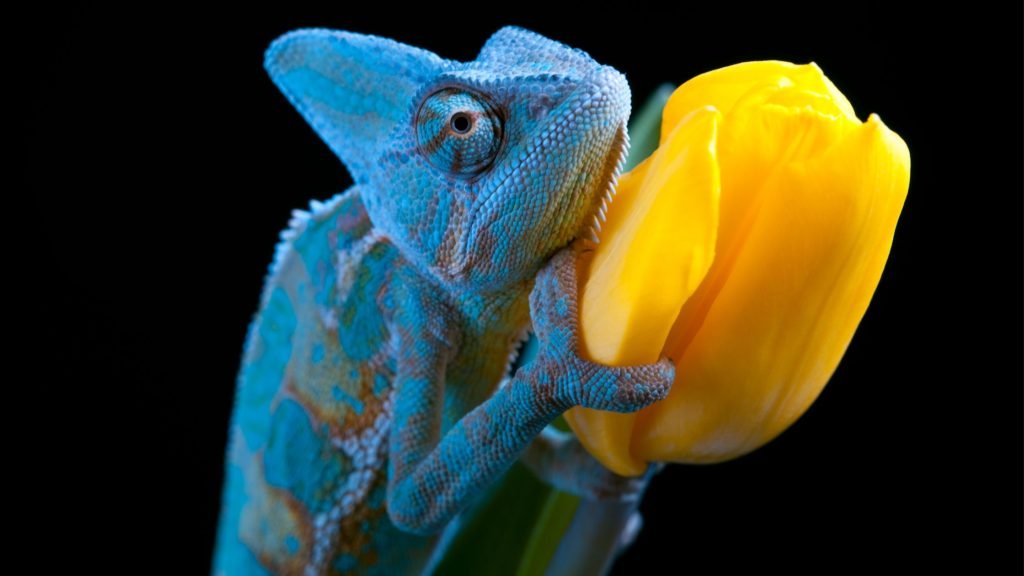Are you ready to discover the enchanting, mysterious world of chameleons? This article will unveil 20 little-known chameleon facts that will blow your mind and leave you amazed. From their superpowers of color-changing and lightning-fast tongues to their unique relationships with their surroundings, these creatures are indeed unlike any others. So, come and join us on a captivating journey through the fascinating world of chameleons and discover what makes them truly one of a kind.
1. Do chameleons bite?
It’s a problem because while they have razor-sharp chameleon teeth, they don’t typically use biting as a defense. However, if they feel threatened, they might give a warning nip, but it wouldn’t be as potent as one would expect from their teeth.
2. Have you ever marveled at the extraordinary length of a chameleon's tongue?
These little critters can shoot their tongues at lightning speed to capture prey, and their tongues can be up to twice the length of their bodies! Now that’s impressive!
As for what animal eats chameleons, that would depend on the species and where they’re found. But, in general, chameleons are preyed upon by snakes, birds of prey, and mammals. It’s a jungle out there, indeed!
3. Can chameleons hear?
The answer is a paradox. Chameleons don’t have external ears, but they have ear structures inside their heads. They use these inner ear structures to detect vibrations and low-frequency sounds, so while they may not be able to hear in the traditional sense, they’re still able to perceive sounds in their environment.
And there is a little information on these captivating creatures and their chameleon teeth!
4. Are chameleons color blind?
Another Chameleon Facts let’s address the question of color blindness in chameleons. It’s a common misconception that chameleons are color blind, but the truth is, they have pretty impressive visual acuity! Chameleons can see a broader range of colors than we can, enabling them to blend in seamlessly with their surroundings. Their color-changing abilities operate to communicate and signal to other chameleons, so their vision is quite an asset.
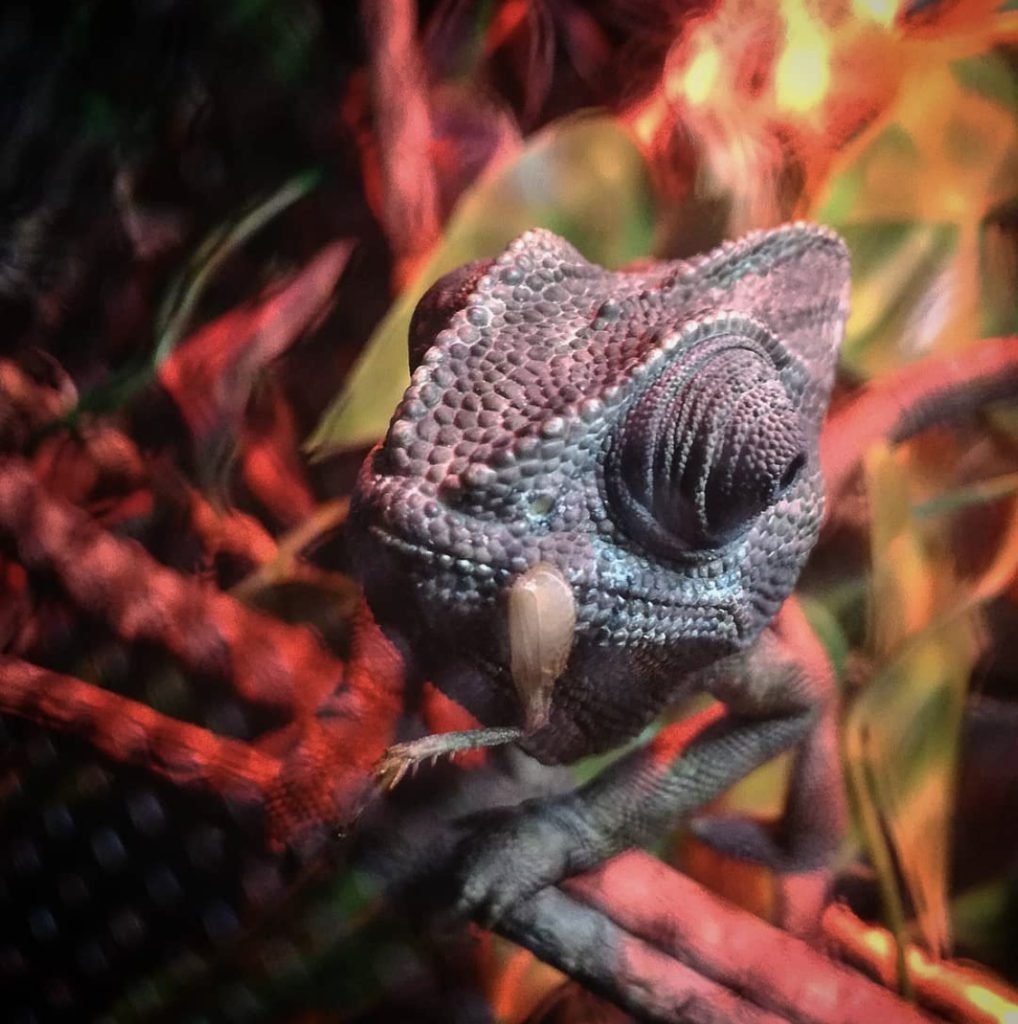
5. Can they eat dead crickets?
It’s not advisable to feed chameleons dead crickets because dead insects can carry bacteria and parasites that can harm the chameleon. Chameleons are best fed live insects such as crickets, as they provide necessary movement and stimulation for the chameleon.
What about freeze-dried crickets? While freeze-dried crickets can be a convenient food option for pet chameleons, it’s best to stick to live insects, as they provide necessary exercise and stimulation. Freeze-dried crickets do not have the same nutritional value as live insects.
6. Can chameleons eat strawberries?
Enter to Chameleon facts #6: Chameleons are insectivores, so fruit should only make up a small portion of their diet. Some chameleons might nibble on a piece of fruit now and then, but it should be considered as something other than a staple food source.
7. Can chameleons lay eggs without mating?
It’s a curious question, but the answer is no. Female chameleons require mating with a male to produce eggs. The male fertilizes the eggs within the female’s body, and she then lays the eggs on her own.
8.Do chameleons make noise?
That’s a perplexing question! While some species of chameleons make sounds, such as grunts or hisses, many are quiet. Chameleons communicate primarily through visual displays, such as changes in color and posture.
9. Do chameleons stink?
It’s a somewhat subjective question, but chameleons generally do not have a noticeable odor. However, if a chameleon is stressed or feels threatened, it may release a musky scent as a defense.
10. Are chameleons aggressive?
Chameleons are not naturally fierce creatures but may become defensive if they feel threatened. It’s vital to handle pet chameleons gently and with care to minimize stress and reduce the risk of defensive behavior.
11. Can chameleons swim?
That is an intriguing question, but the answer is no, chameleons are not built for swimming. Because of their arboreal lifestyle, they find climbing and clinging to branches simpler than swimming.
12. How long can chameleons go without eating?
Chameleon facts #12 That can vary depending on the species, but on average, chameleons can go about a week without eating. However, it’s crucial to provide regular meals for pet chameleons to maintain their health and well-being.
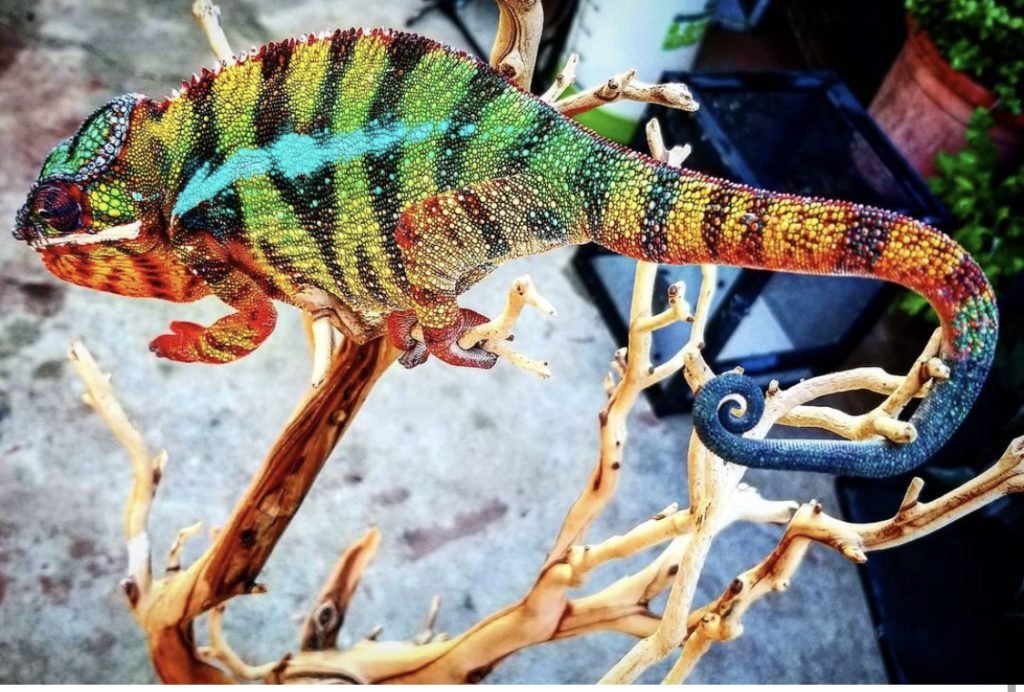
13. Why do chameleons curl their tails?
Chameleons use their tails for balance and support while climbing, but they also curl their tails to communicate and signal aggression to other chameleons.
14. Can chameleons eat wax worms?
Wax worms are not a natural food source for chameleons and should be fed sparingly. It’s best to stick to a diet of live insects for pet chameleons.
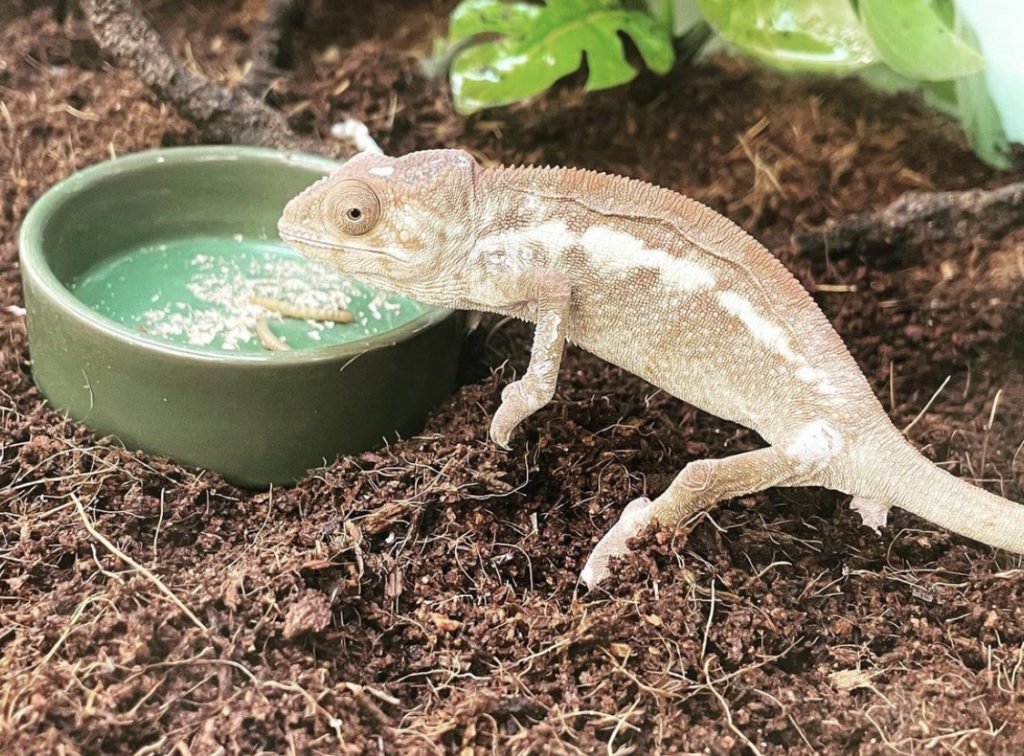
15. How long do chameleons sleep?
That can vary between species, but on average, chameleons sleep for about 8-12 hours per day. They are most active during the day and sleep at night.
16. Do chameleons eat spiders?
That is a somewhat whimsical question, but the answer is yes, some chameleons eat spiders as part of their diet. However, spiders can be a hazardous food source for chameleons, as they may contain toxic substances that can harm the chameleon.
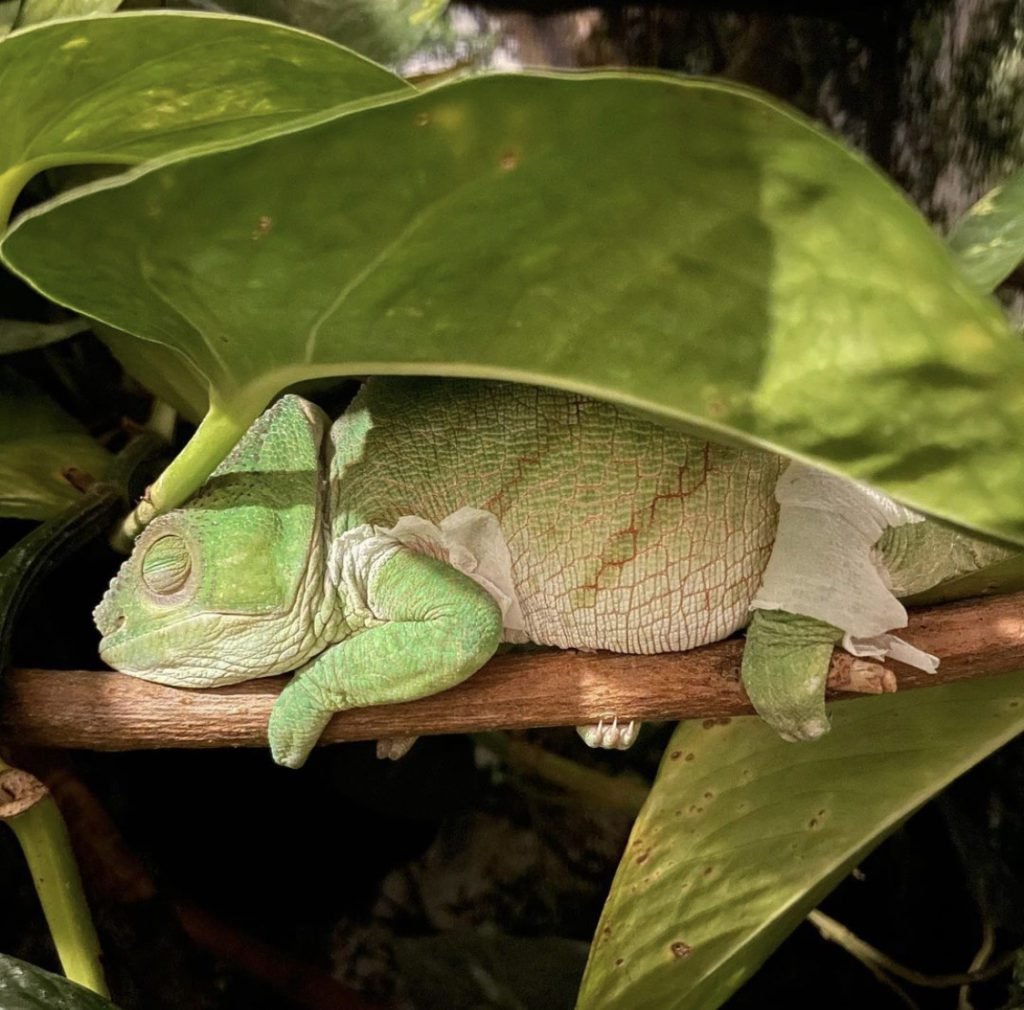
17. How many eggs do chameleons lay?
That can vary between species, but on average, female chameleons lay between 10-20 eggs simultaneously. The mother leaves the eggs to hatch in a tunnel or safe branch.
18. How often do chameleons poop?
On average, pet chameleons will poop once a day or every other day. It’s essential to keep the cage of a pet chameleon clean to avoid the buildup of waste.
19. Do chameleons shed when stressed?
While chameleons shed their skin as they grow, stress can sometimes cause them to shed more frequently. It’s vital to minimize stress for pet chameleons to maintain their optimal health.
20. How long can chameleons go without water?
That can vary between species, but on average, chameleons can go about a week without access to water. However, it’s crucial to provide regular access to fresh water for pet chameleons to maintain their health and well-being.

